Hello, I’m Sachi!
Thank you for showing interest in Dazaifu Tenmangu Shrine.
Here, I’d like to introduce our town’s pride, the beautiful and historic Dazaifu Tenmangu.
What is Dazaifu Tenmangu Shrine?
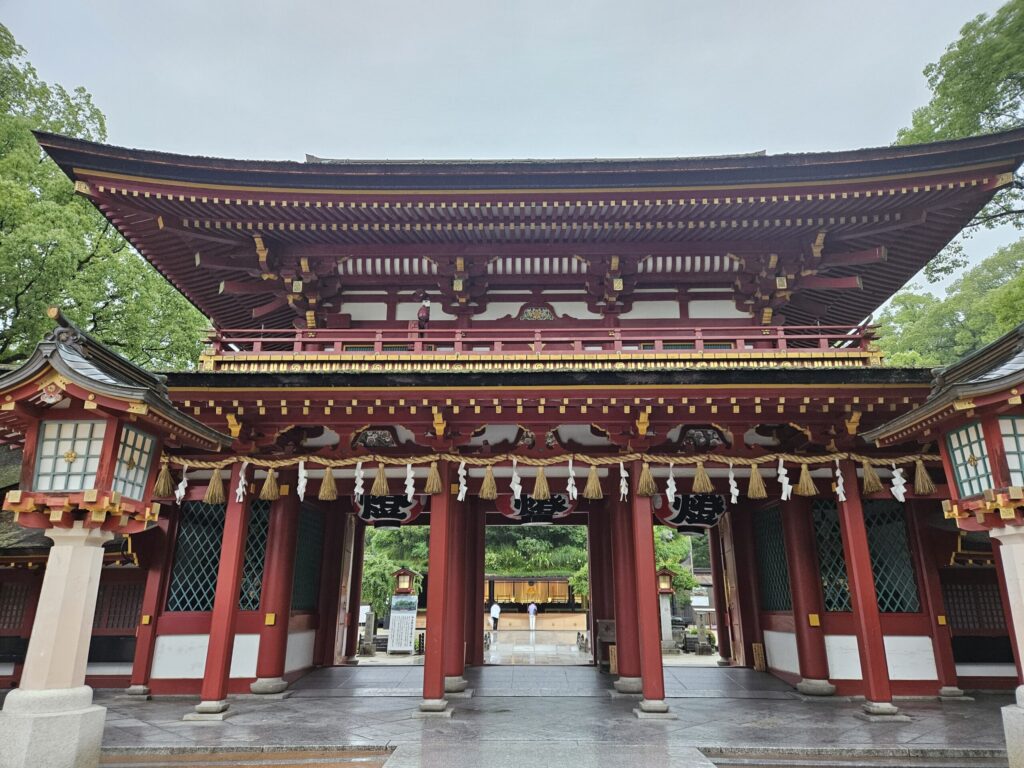
A brief overview of the shrine
Dazaifu Tenmangu Shrine is one of the most important Shinto shrines in Japan and the spiritual heart of Dazaifu City in Fukuoka Prefecture.
Dedicated to Sugawara no Michizane, the deity of learning and culture, the shrine attracts over 10 million visitors every year.
The grounds are filled with historic structures, sacred statues, and seasonal beauty, making it both a place of worship and a cultural landmark.
Why it’s the most famous shrine in Kyushu
Among the thousands of Tenmangu shrines across Japan, Dazaifu Tenmangu is considered the most prominent and serves as the head shrine in Kyushu.
Its reputation stems not only from its deep history but also from its role as a symbol of education.
Students from all over Japan—and even abroad—come here to pray for academic success, especially before entrance exams.
This tradition makes the shrine a unique cultural experience for both locals and international visitors.
Connection to Sugawara no Michizane, the “God of Learning”
The shrine is dedicated to Sugawara no Michizane, a scholar, poet, and politician of the Heian period.
After being unjustly exiled to Dazaifu, Michizane passed away here in 903.
Legends say that his spirit caused natural disasters in Kyoto, which led the Imperial Court to enshrine him as Tenjin, the “God of Learning.”
Today, Dazaifu Tenmangu stands as the central place of worship for Tenjin faith, where visitors seek blessings for wisdom, education, and cultural growth.
Highlights and Things to See
The Romon Gate and Main Approach
The first thing visitors notice is the impressive Romon Gate, which serves as the grand entrance to Dazaifu Tenmangu Shrine. Walking along the main approach, you’ll find shops selling traditional sweets and souvenirs, creating a lively atmosphere before reaching the sacred grounds.
The Sacred Ox Statues (Goshingyu)
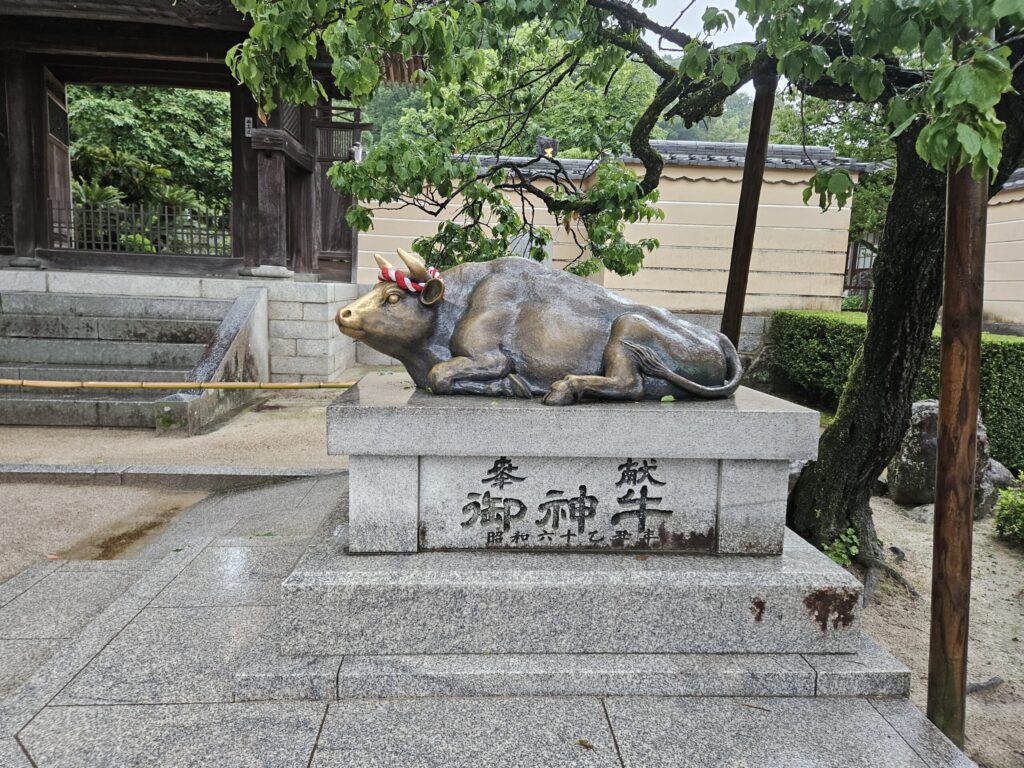
Scattered throughout the shrine grounds are bronze ox statues known as Goshingyu. According to legend, an ox carried Michizane’s body to his final resting place.
Today, visitors gently touch the statues—especially the head—believing it brings wisdom and good fortune.
Now, here’s a little insider tip from a local.
Most tourists line up to touch the Goshingyu near the big torii gate at the entrance.
It’s easy to spot, but there’s no explanation sign, and the line can get quite long.
What many people don’t realize is that there’s another Goshingyu located near the temizuya (water pavilion).
This one actually has a proper information sign, and there’s usually no waiting at all.
The blessings are the same, so if you want to avoid the crowd, I definitely recommend the Goshingyu by the temizuya.
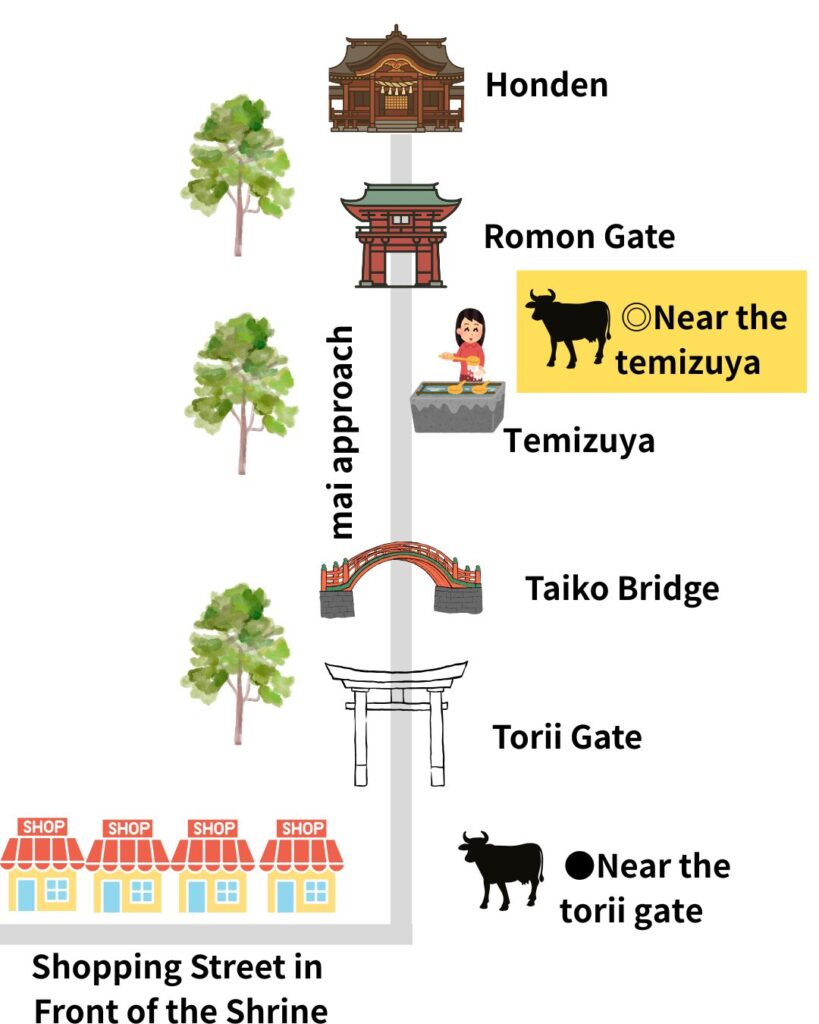
The Taiko Bridge and Pond Garden
One of the most scenic spots is the Taiko Bridge, a series of three arched bridges crossing a pond.
The bridges symbolize the past, present, and future, offering a beautiful photo opportunity surrounded by seasonal nature.
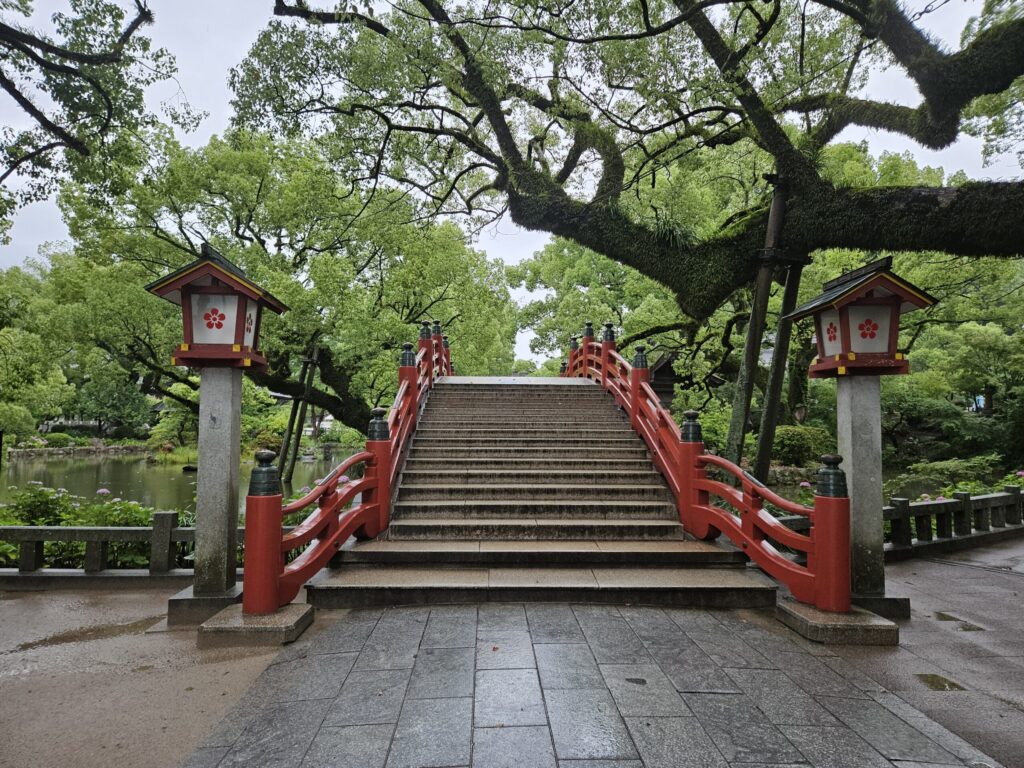
The Main Hall (Honden)
The Main Hall, designated as an Important Cultural Property, enshrines Sugawara no Michizane. Built in the 16th century, the structure reflects traditional Japanese shrine architecture and remains the spiritual center of worship.
Currently, the Main Hall of Dazaifu Tenmangu is undergoing a major renovation—the first in 124 years. Until May 2026, worshippers will visit a temporary hall (kariden).
This temporary hall features a unique ceiling design inspired by plants and natural motifs, giving it a softer and more refreshing atmosphere compared to the traditional architecture.
What makes it even more special is that the temporary hall will only be available to see until next year.
It’s a once-in-a-lifetime chance to experience this rare version of Dazaifu Tenmangu, so don’t miss it!
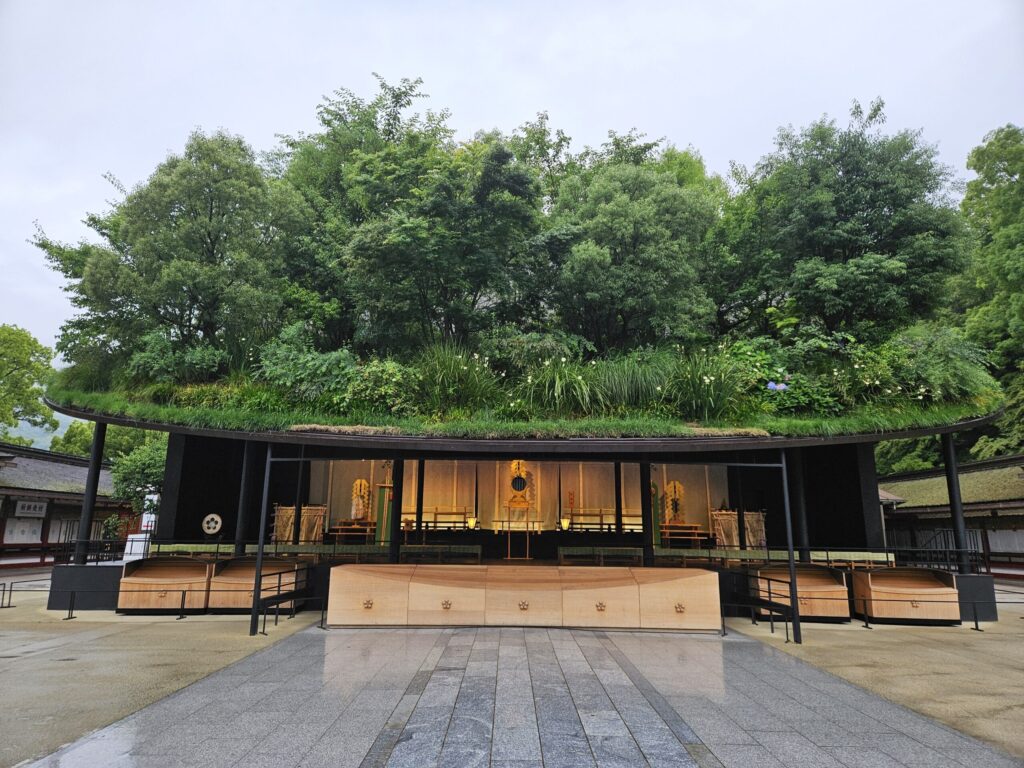
Seasonal Beauty and Plum Blossoms
Dazaifu Tenmangu is especially famous for its 6,000 plum trees, which bloom beautifully in February and March.
Known as the “shrine of plum blossoms,” it also offers seasonal beauty year-round—from cherry blossoms in spring to vibrant autumn leaves.
The Tobiume (Flying Plum Tree)
Dazaifu Tenmangu is famous for its thousands of plum trees, but one stands out above all—the legendary Tobiume, or “Flying Plum Tree,” located quietly near the Main Hall.
According to an old Heian-period legend, this tree flew all the way from Kyoto to Dazaifu, longing to be with Sugawara no Michizane after his exile. Since then, the Tobiume has been cherished as a symbol of devotion and loyalty.
It is also said that this tree is the very first plum to bloom within the shrine grounds each year, heralding the arrival of spring to Michizane himself.
Isn’t that such a romantic and heartwarming story?
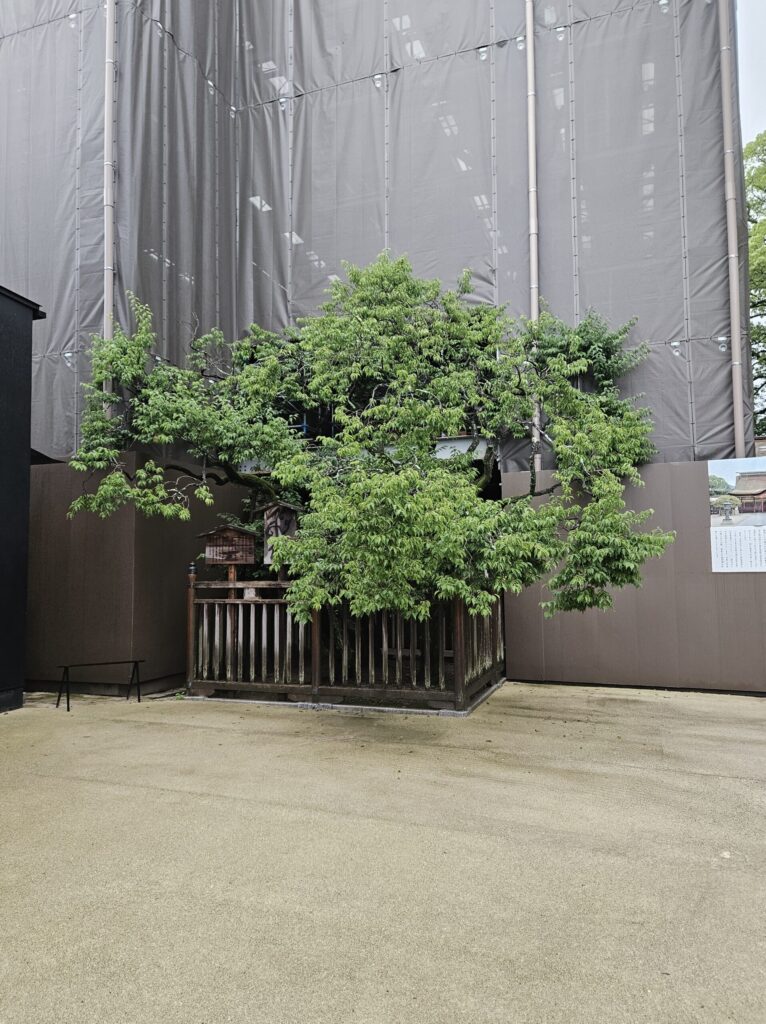
The story of Sugawara no Michizane—scholar, poet, and politician of the Heian period—is deeply tied to the history of Dazaifu Tenmangu.
If you’d like to learn more about his life and why he is revered as the “God of Learning,” please check out our detailed article here: 👉
Traditional Experiences at the Shrine
Visiting Dazaifu Tenmangu is not only about sightseeing—it’s also a chance to experience Japanese spiritual culture. At the shrine, visitors can try traditional practices such as praying, drawing omikuji (fortune slips), and purchasing omamori (good luck charms).
If you would like to learn the proper way to pray step by step—including how to use the temizuya (water pavilion) and how to bow and clap—we’ve created a detailed guide for beginners.
Practical Travel Tips
Best Time to Visit
The best time to visit Dazaifu Tenmangu depends on what you want to see.
Plum blossoms in February and March are the most famous, while cherry blossoms in April and colorful autumn leaves in November are also popular.
For a quieter experience, early mornings on weekdays are recommended, as weekends and New Year can be extremely crowded.
※Most of the photos on this page show the shrine without many people.
That’s because I woke up early and walked around the grounds at 6 a.m. on a weekday.
The atmosphere was solemn and truly mystical—it felt as if I could sense the presence of Sugawara no Michizane, the guardian deity of our town, very close by.
Since the first trains haven’t started running yet at that time, this is a special experience that only locals can usually enjoy.
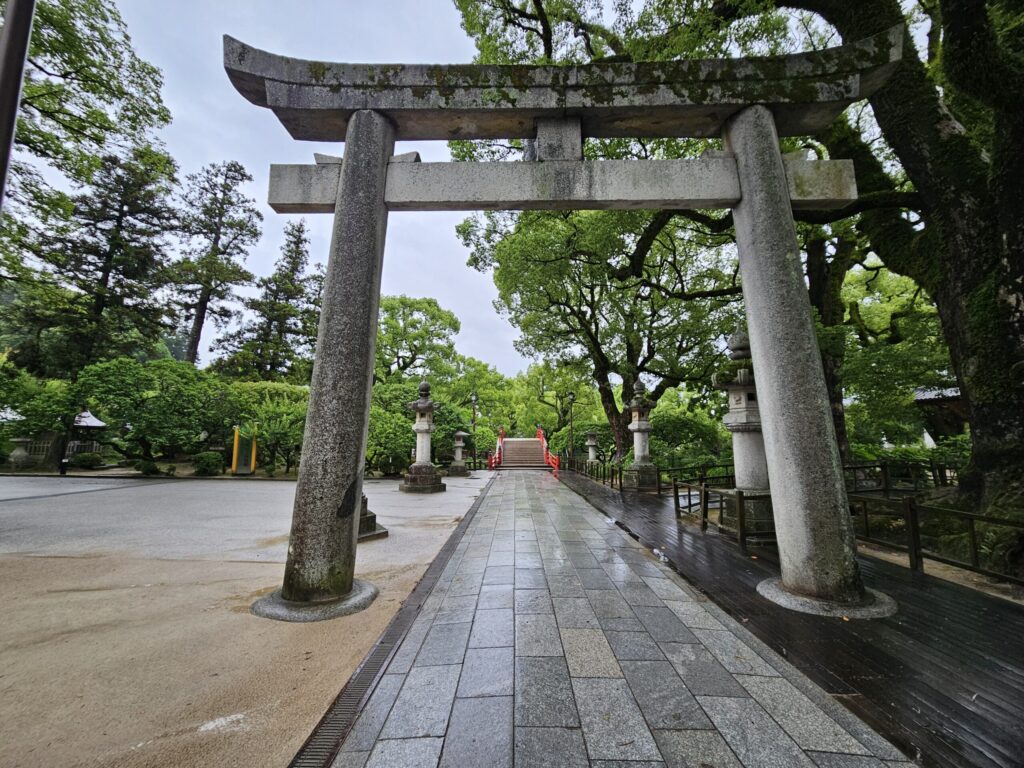
Tips for Photography and Instagram Spots
Some of the most photogenic spots include the Taiko Bridge, the Romon Gate, and the plum blossom gardens.
Sunrise and late afternoon light provide the best atmosphere for photos. Remember to be respectful when taking pictures—avoid blocking the way of worshippers.
Accessibility for Families and Seniors
The shrine grounds are mostly flat, making them accessible for families with strollers and elderly visitors.
Some paths near the bridges and gardens have steps, but alternative routes are available. Wheelchair rental and barrier-free toilets are also provided.
Facilities and Useful Information
Coin lockers are available near the entrance, and restrooms are well maintained.
Most shops on the approach street accept cash only, so carrying Japanese yen is recommended. While some staff can speak basic English, having a translation app can be helpful.
Things to Do Around the Shrine
Try Freshly Grilled Umegae Mochi
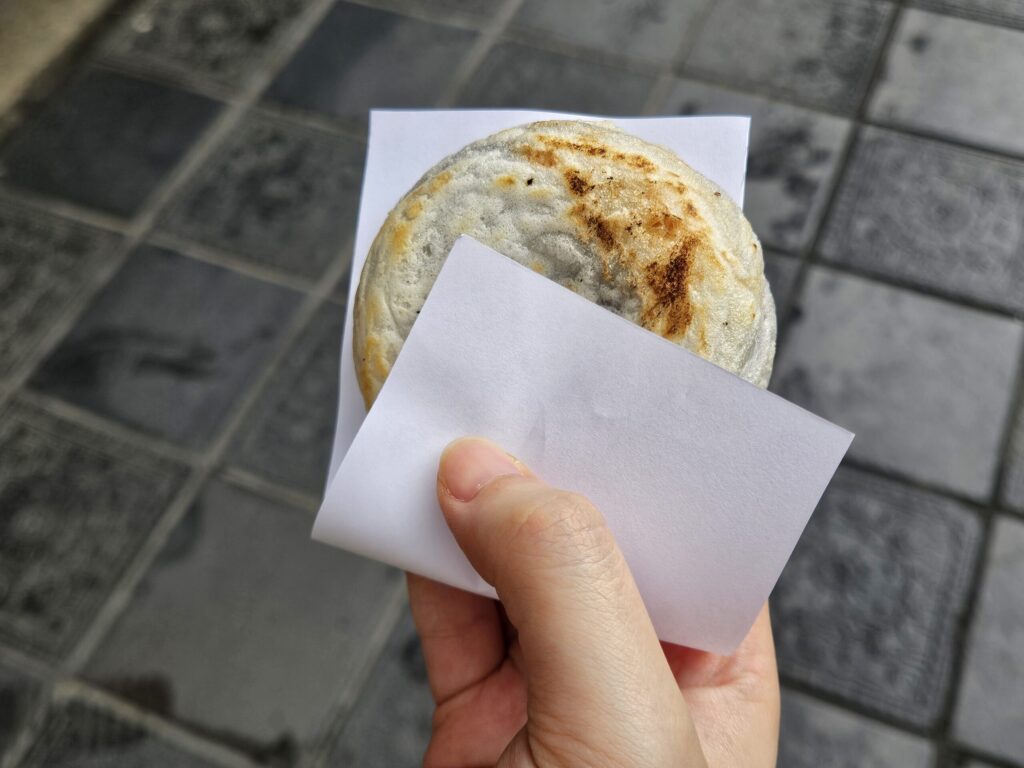
No trip to Dazaifu is complete without tasting Umegae Mochi, a sweet rice cake filled with red bean paste.
Dozens of shops line the approach to the shrine, each offering their own freshly grilled version. Comparing flavors from different shops is part of the fun!
I actually spent two full days tasting Umegae Mochi from 12 different shops to compare their flavors! 🍡
👉 You can read the full review here:
Gourmet Sweets in Dazaifu: Tried 12 Umegae Mochi Shops Over Two Days!
Visit the Kyushu National Museum
Located just behind Dazaifu Tenmangu, the Kyushu National Museum showcases the cultural exchange between Japan and Asia.
Its impressive modern architecture contrasts beautifully with the historic shrine, and many exhibits have English explanations.
Explore Komyozenji Temple and Its Zen Gardens
A short walk from the shrine brings you to Komyozenji Temple, famous for its rock and moss gardens. The temple offers a quiet, meditative atmosphere, making it a peaceful contrast to the busy shrine.
Discover Hidden Side Streets and Cafés
Beyond the main approach, narrow side streets are filled with cozy cafés, souvenir shops, and art galleries. These hidden corners of Dazaifu allow you to experience the town at a slower pace, away from the crowds.
Conclusion
Dazaifu Tenmangu Shrine is more than just a sightseeing spot—it is a place where history, culture, and spirituality come together.
From the impressive Romon Gate and the symbolic Taiko Bridge to the seasonal beauty of plum blossoms, every corner of the shrine tells a story.
Whether you come to pray for academic success, enjoy local sweets, or simply experience the peaceful atmosphere, Dazaifu Tenmangu offers something for everyone.
It truly is a must-visit destination in Fukuoka.
If you would like to learn more, don’t miss our detailed guides on How to Pray at Dazaifu Tenmangu, Seasonal Festivals at Dazaifu, and Best Local Sweets Around the Shrine.

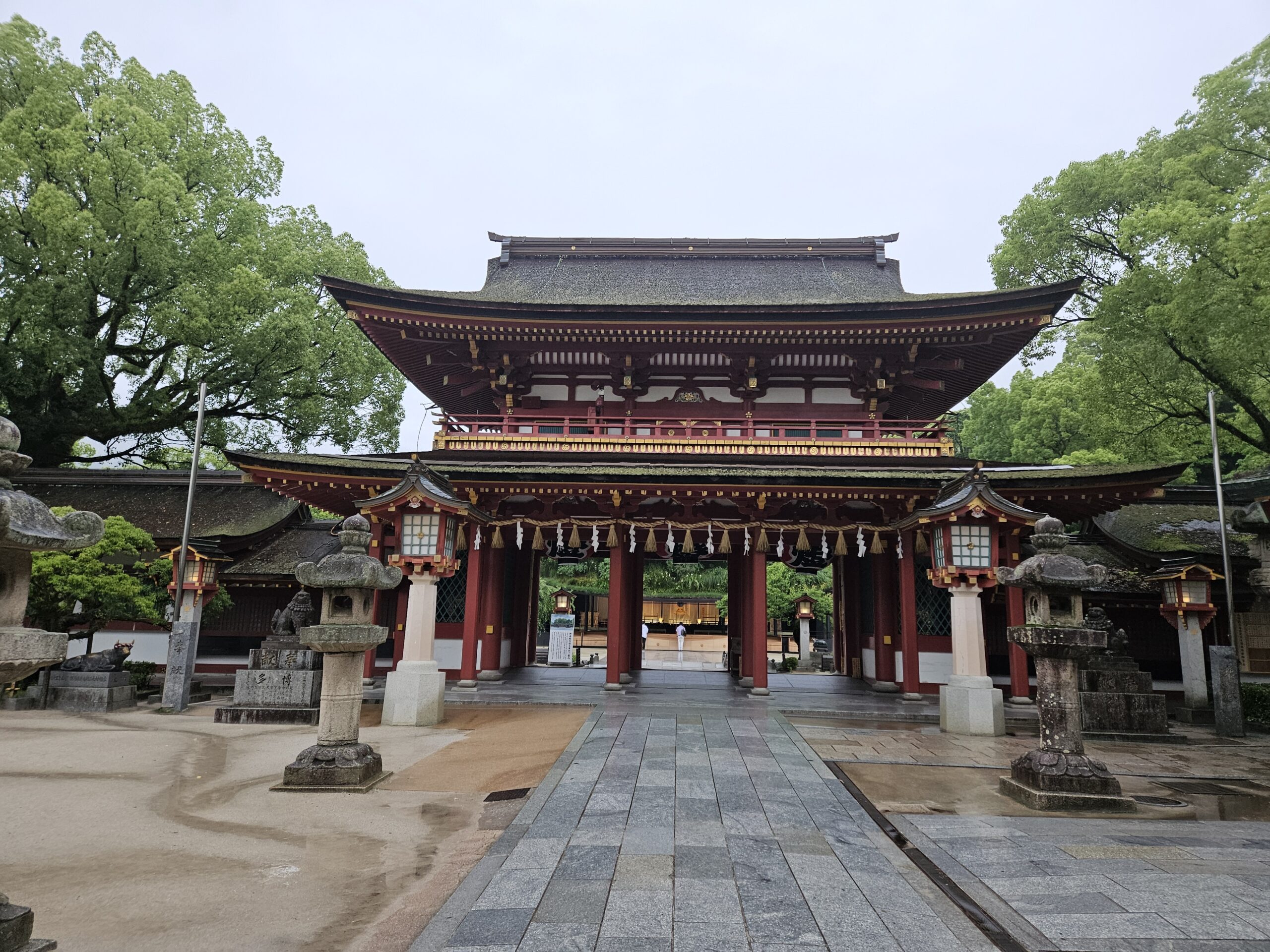



コメント